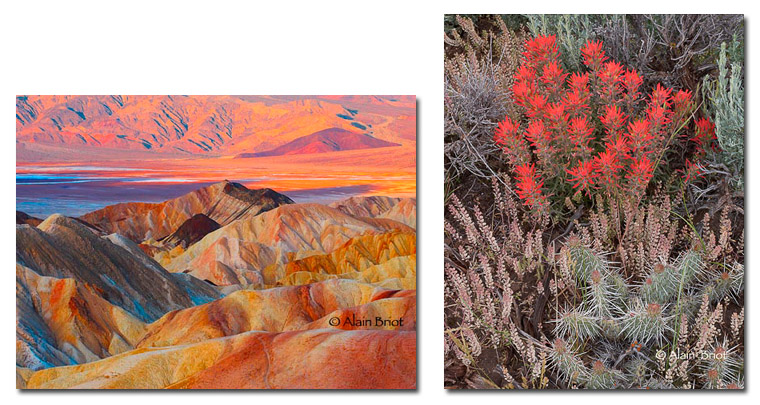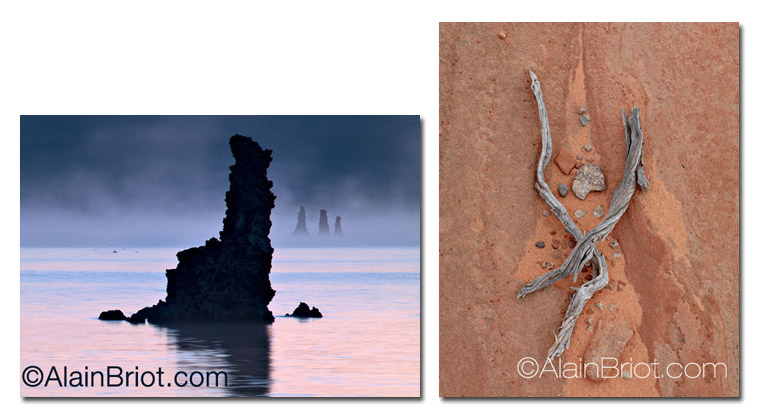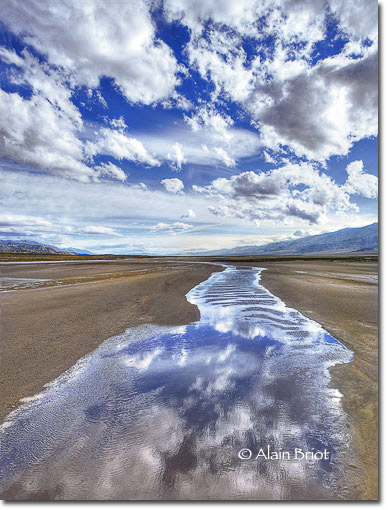The Traditional Rules of Composition |
Part Two of a Two-Part Essay
Composing With Color
In this type of composition color plays a dominant role in defining the structure of the image. Areas of different colors are used to define the design of the image and outline the shapes present in the image. This type of image is about color first and foremost.
These images are about color first and foremost. However, other rules of composition are used in their construction. Study the following examples carefully to find which other rules of composition are used in these photographs:

Composing with Light
Light quality is essential in creating an attractive image. Light defines the shapes of objects, reveals certain areas and hides others. In this type of composition light plays a dominant role in defining where each element is placed in the image. The composition of the image is based on the patterns of light and shade present in the image. In many ways the light guides these compositions.
These images are about light first and foremost. However, other rules of composition are used in their construction. Study the following examples carefully to find which other rules of composition are used in these photographs:

Composing with Black and White
Black and white is color without hue and saturation. The only element available to us to work with is density, in this instance this is shades of grey plus pure black and pure white.
When composing an image with black and white, the interest of the photograph comes from several things.
First, how we use these shades of grey? How we arrange them in a specific black and white palette. Do we prefer high contrast or low contrast? Do we use a full palette from black to white, or only a partial palette? For example, do we use a dark palette without a pure white, or a light palette without a pure black?
Second, Black and white emphasizes shapes, patterns and lines in the image. This creates a graphic quality that is both attractive and compelling.
Third, Black and white helps abstract subject matter. We do not see the world in black and white (unless we are color blind) therefore black and white images represent a departure from reality.
Finally, black and white simplifies images. This can make a photograph stronger by removing distracting colors. However, we need to compensate for the loss of color by using black and white effectively or the image will be uninteresting.

Minimalist Compositions
This type of composition makes use of a minimum number of elements. Reducing the number of elements simplifies the image and strengthens the composition.
Minimalist compositions can be striking or quiet depending on the light and the tonalities used in the image.
In the horizontal example, the light and the tones are dramatic, giving a sense of mystery to the image.
In the vertical image however, the light is soft and the tonality is continuous. This creates a sense of balance and harmony in the photograph.

Repetition
In this type of composition one of the elements in the photograph is repeated several times.
Repetition starts when you have two similar elements in the same image. There is no limit as to how many times you can repeat a specific element.
Repetition can be achieved by finding a scene featuring several similar elements, or by arranging elements so as to create a repetition, or again by duplicating an element in the computer.
I prefer to find elements that are naturally repeated. However, this is a personal choice and not a requirement.
Repetition is a very effective form of composition. Viewers notice repeated elements almost instantaneously and are drawn to this type of composition.

Color Palette Compositions
The concept of Color Palette is fundamental to the practice of art. The personal style of an artist is largely defined by his use of a specific color palette. This is true for all visual arts, not just for photography.
In this type of composition the colors in the photograph are both chosen and controlled by the artist. This process is started in the field, by deciding to include or not include specific elements in the image. It is also done by choosing the location, the time of day, the season, the weather and the other variables for the photograph.
The process of controlling the color palette is continued in the studio during image conversion and optimization. Software provides us with total control over the way a color looks by giving us access to the three variables of color: density, saturation and hue. By modifying one or several of these variables we can fine-tune the color palette of a photograph at will.
A number of color arrangements can be used, or the artist can create his own color arrangement. An in-depth knowledge of the three elements of color, of color balance (both technical and artistic) and of color combinations is essential in order to use this composition effectively.

If you want to study composition in depth, consider purchasing my books: Mastering Landscape Photography and Mastering Photographic Composition, Creativity and Personal Style. Both go into extensive details about composition and about the other fundamental aspects of fine art photography.
Comments on NPN landscape photography articles? Send them to the editor. NPN members may also log in and leave their comments below.
 Alain Briot creates fine art photographs, teaches workshops and offers DVD tutorials on composition, raw conversion, optimization, printing, marketing photographs and more. Alain is also the author of Mastering Landscape Photography and Mastering Photographic Composition, Creativity and Personal Style. Both books are available from Amazon and other bookstores as well from Alainís website.
Alain Briot creates fine art photographs, teaches workshops and offers DVD tutorials on composition, raw conversion, optimization, printing, marketing photographs and more. Alain is also the author of Mastering Landscape Photography and Mastering Photographic Composition, Creativity and Personal Style. Both books are available from Amazon and other bookstores as well from Alainís website.
You can find more information about Alain's work, writings and tutorials as well as subscribe to Alainís Free Monthly Newsletter on his website at http://www.beautiful-landscape.com. You will receive over 40 essays in PDF format, including chapters from Alainís books, when you subscribe.